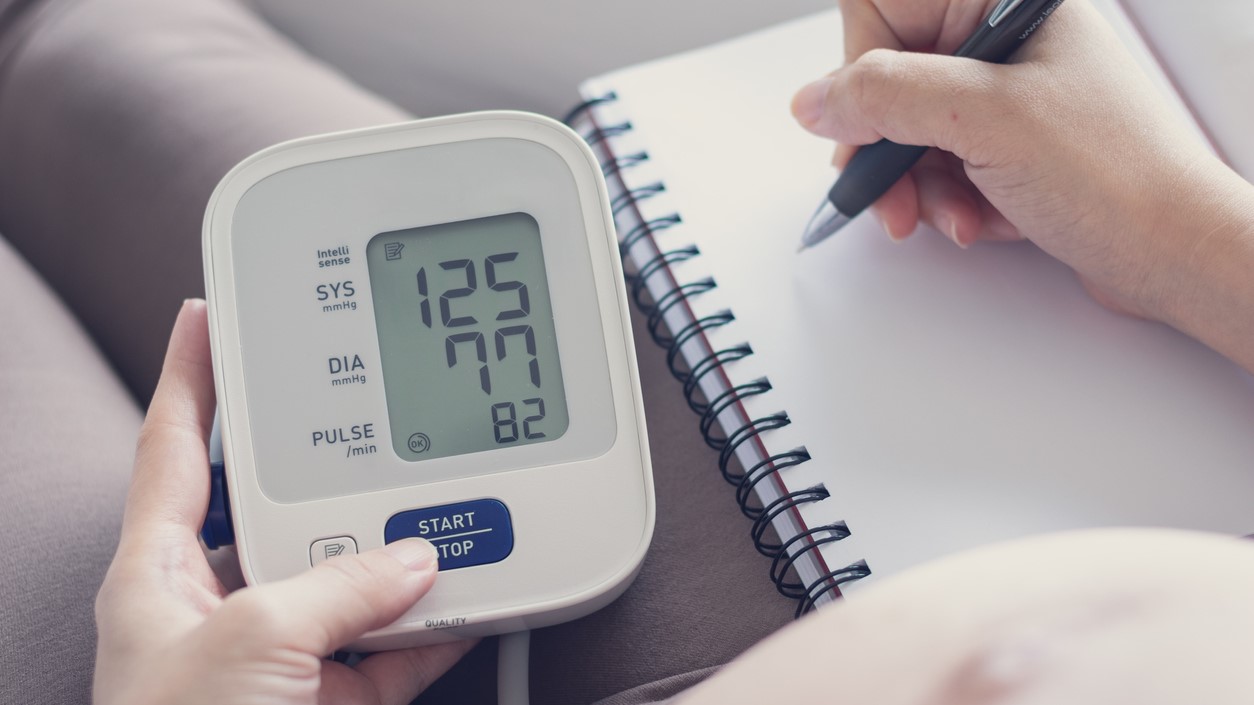A How-To Guide to Home Blood Pressure Monitoring
Checking your blood pressure at home is a simple way to help control hypertension. Here are few things you should know about how to do it right.

According to the CDC, more than half of adults in the United States have high blood pressure, also known as hypertension. High blood pressure is a risk factor for heart disease, the leading cause of death for women. It is also important to monitor blood pressure during pregnancy. Blood pressure disorders in pregnancy affect one in ten pregnancies.
Knowing your blood pressure is a first step toward controlling it. Home monitoring can be a simple way to get accurate readings. For some, going to a clinic can even cause higher blood pressure, a condition known as “white coat hypertension.” Home monitoring can help provide a more accurate reading in these cases.
However, Ashley Benson, M.D., M.A., M.S., a perinatologist at the Center for Women’s Health, stresses that knowing how to properly take blood pressure at home is critical.
“Whether pregnant or not, getting accurate blood pressure measurements is critical,” says Dr. Benson. “A cuff that is too big may cause blood pressure to appear falsely low, leaving elevated blood pressures untreated. Likewise, there are a number of things that can cause blood pressure to appear elevated, leading to an incorrect diagnosis or unnecessary treatment.”
General guidelines
- Get a good machine. Monitors exist in arm cuff, wrist cuff or finger models. Most doctors recommend arm cuff models. Dr. Benson recommends using a the Omron MIT or T9P models. Another option is the Microlife WatchBP Home. These models have all been validated for use in pregnancy.
- Make sure the arm cuff fits properly. There are different sizes available. The cuff should fit snugly but not be too tight. Always place the cuff over bare skin, not clothing.
- Get your monitor checked at the clinic before using it regularly. While there, your provider can watch you take your own blood pressure to be sure you are doing all the steps correctly. Get your device checked yearly at the clinic.
- Take your blood pressure at around the same time each day (or twice per day, if that is the recommendation).
- Use a log to track your readings. There are also apps that can help.
- Do not eat, drink or exercise for 30 minutes before any reading.
- Do not talk while taking your blood pressure.
Steps to take your blood pressure at home
- Get a chair with back support and place it near a table or counter in a quiet place.
- Sit in the chair with your feet flat on the ground, legs uncrossed.
- Stretch out your arm on the table or counter; your arm should be about heart-level. If needed, support your arm with a pillow or cushion so it is high enough.
- Place the cuff around your outstretched arm. The bottom of the cuff should be about half an inch from the bend in your elbow.
- Push the start button and allow the cuff to squeeze. It should not be uncomfortable.
- Write down your reading.
- Wait 1-3 minutes and take a second reading. Record it in your log.
Interpreting your results
Doctors read blood pressure as a combination of two numbers, your systolic and your diastolic blood pressure. Both numbers matter to determine if you are experiencing hypertension. Your monitor should display both numbers, with systolic blood pressure on top and diastolic blood pressure below.
Use this chart for reference:
| Blood Pressure Category | Systolic Blood Pressure | Diastolic Blood Pressure | |
|---|---|---|---|
| Normal | <120 mmHg | and | <80 mmHg |
| Elevated | 120-129 mmHg | and | <80 mmHg |
| Hypertension | |||
| Stage 1 | 130-139 mmHg | or | 80-89 mmHg |
| Stage 2 | >140 mmHg | or | >90mmHg |
High blood pressure in pregnancy
High blood pressure has a different effect on your body during pregnancy because your heart is already working harder than usual. Your provider will take your blood pressure at prenatal appointments and may recommend home monitoring.
High blood pressure can lower blood flow to the placenta, slow fetal growth and lead to premature birth, among other things. High blood pressure in pregnancy also increases the risk of future cardiovascular disease.
If you have high blood pressure now and are thinking about getting pregnant, talk to your doctor about the best treatment for you. Lifestyle changes can help. Some blood pressure medications are safe in pregnancy, while others are not.
Preeclampsia is a serious condition that occurs when blood pressure is elevated after 20 weeks of pregnancy. If you are pregnant and note high blood pressure, contact your provider.
“Even mildly elevated blood pressures in pregnancy can cause complications for the pregnant person or baby,” says Dr. Benson. “By closely monitoring blood pressure, pregnancy-care providers can give treatment to lower these risks and improve safety in pregnancy.”